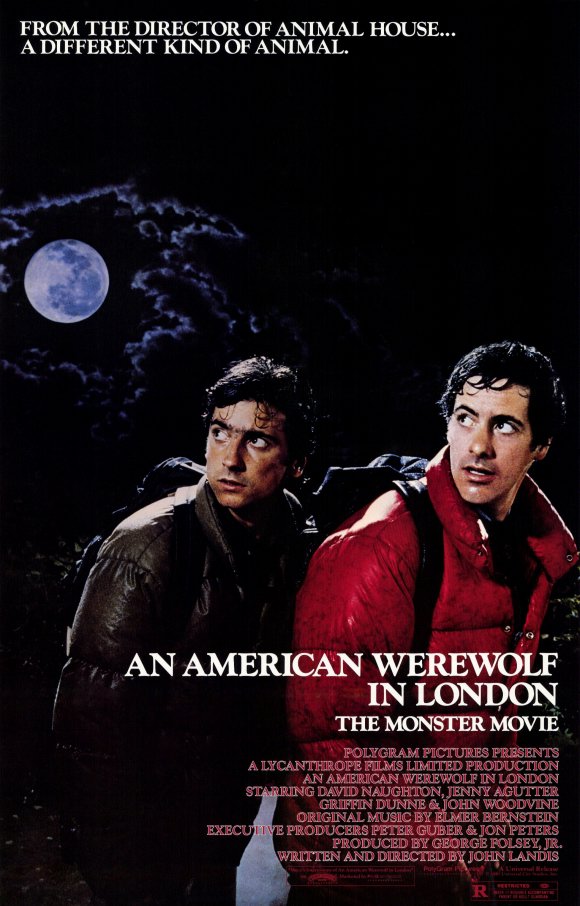
With any luck, you don’t have anyone in your life who has seen as many werewolf movies as I have. There are people out there, I’m sure, who have seen more werewolf movies than I have, but I’ve yet to meet one. So you will know that I speak from some measure of authority when I tell you that AN AMERICAN WEREWOLF IN LONDON is the best werewolf movie to date. The easiest kind of bad horror movie to make is a bad werewolf movie, and I can promise you this is true because I have seen very many of them.
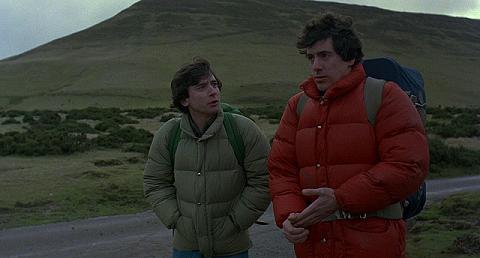
AN AMERICAN WEREWOLF IN LONDON is the story of two young American backpackers, Jack Goodman (Griffin Dunne) and David Kessler (David Naughton), who take an ill-advised stroll through the Yorkshire moors at night. They are viciously attacked by a snarling, unseen creature who sure sounds for all the world like a feral dog, or else a wolf. The locals finally interrupt the gory scene by firing upon the beast. Jack does not survive the attack, but the last thing David sees before he passes out is a naked man. Maybe he’s hallucinating.
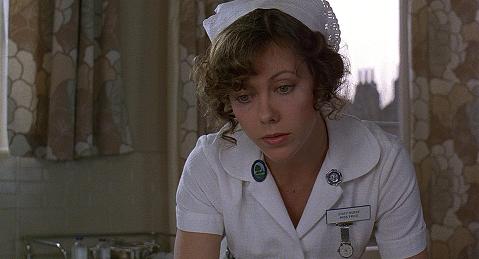
When David wake up, he’s in a hospital in London, being attended by a pretty nurse named Alex (Jenny Agutter) who gives him the awful news that his friend is gone. The local police are looking for answers, but David doesn’t have any to give. The man found on the scene is considered to be a murderous maniac. There was no sign of any animal. The mystery dissipates as David falls in love with Alex — can you blame him? — and she gives him a tour of London. Trouble in paradise looms when David starts having intense nightmares, of demonic SS officers gunning his family down and cutting his throat.
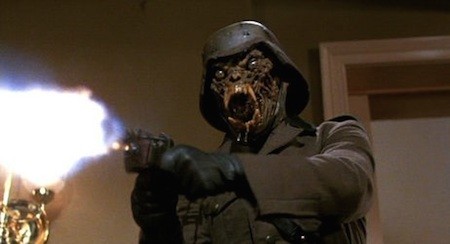
The subtext is pretty clear — Landis is a Jewish filmmaker, and so too are his lead characters, Kessler and Goodman. This is the kind of Holocaust panic a young Jewish boy in America would grow up with in the 1980s, having been raised on nightmarish true stories of what happened to family members in Europe. (Believe me, I know first-hand.) None of this has to be stated for an audience to get it, and even if they don’t, the severity of these violent nightmares are so abrupt and disturbing that they have the intended effect of rattling both the viewer and the lead character. David knows something is wrong, something violent is coming. And then he starts getting visits from Jack.
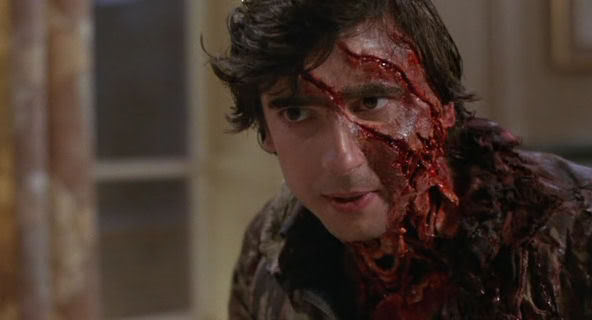
Jack appears to David in the same form he was in when he died. Look at that zombie make-up. That’s three decades before The Walking Dead, kids. Phenomenally gory, technically accurate, and horrifically believable. The Landis touch is the hilarious dissonance between Jack’s ghastly visage and his characteristically sardonic manner: “Have you ever talked to a corpse? It’s boring!” Jack knows what David is becoming. In a unique, unexpected, and completely dark spin on what anyone might expect from this movie, Jack urges his best friend to take his own life, before he kills anyone innocent. People think of this movie as a comedy but they’re forgetting it’s a movie where one character tells another to “KILL YOURSELF” and he means it. Naturally, David doesn’t take Jack’s advice, and, come the full moon, wolfly mayhem ensues.
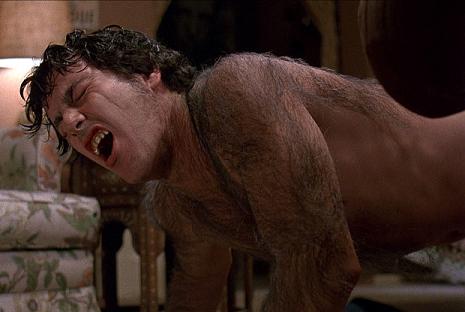
One thing that made AMERICAN WEREWOLF so special is the personal vision of writer/director John Landis. Landis first dreamed up the story when he was a nineteen-year-old production assistant on KELLY’S HEROES (with Clint Eastwood and Don Rickles!) traveling across Europe and experiencing old cultures for the first time as a young American. After the monster success of ANIMAL HOUSE, Landis could direct any movie he wanted, and AMERICAN WEREWOLF is the movie he most wanted to make. Its eerie tone, realistically engaging banter, genuinely romantic lead relationship, and perfectly pitched comedy are what makes it a classic, and the barely-disputable pinnacle of werewolf cinema. The importance of the timeless, beautiful score by the legendary Elmer Bernstein cannot be understated — it connects this movie to the classic history of Universal wolf-man films, while also having an emotional effect that works as well in 2013 as it must have in 1981.
The practical makeup effects are by FX pioneer and longtime Landis associate Rick Baker. (For the record: Landis and Baker are the same team who made Michael Jackson’s landmark Thriller video!)
The first werewolf transformation scene in AN AMERICAN WEREWOLF IN LONDON was a landmark in practical effects. Landis and Baker conceived of it as close to reality as the notion of a man turning into a wolf can be. Limbs stretch. Bones crack. And it HURTS. If you watch the scene, it starts almost comically, with Sam Cooke singing “Blue Moon” on the soundtrack (Landis had a sly way with a vintage pop cue) and David rushing to take his pants off, as if he needs to take a monster shit. The wolf form as imagined by Baker remains one of the scariest wolves in movies — but it looks the hell like a wolf. This isn’t Lon Chaney Jr. with fur glued to his face. David Kessler becomes a full-on, four-legged wolf. To change from person to that, takes a lot of changing.
Observe:
A couple years later, Michael J. Fox in TEEN WOLF proposed that becoming a wolf-man is a blessing. The hottest girl in school wants you, you get cast in the lead of the school play, and you’re suddenly amazing at basketball. Not here. In AN AMERICAN WEREWOLF IN LONDON, lycanthropy is pain. That’s certainly an established part of the werewolf mythos laid down by Curt Siodmak in 1941’s THE WOLF MAN, but Landis has a slightly different definition of werewolves than most – in the pantheon of cinematic monsters, Landis affectionately considers the werewolf a “schmuck.”
The werewolf just can’t win. He wants a happy life, he wants true love. He really doesn’t want to be an animalistic killer, but come the full moon, he don’t got much choice. He’s kind of a sad sack. In the case of Lon Chaney Jr.’s Larry Talbot or David Naughton’s David Kessler, that’s certainly an apt description. There inherently is loneliness in the outcome of AN AMERICAN WEREWOLF IN LONDON. Certainly it is sad to ponder the fate of the young nurse Alex Price after the film’s final scene. She loved a nice guy who suddenly became a monster. It happens.

One reason I’m continually fascinated by the idea of werewolves in movies is because it’s almost entirely an untapped area. One great movie, and very few decent ones to stand near it, means there is plenty of room for company. Remakes and reboots have been discussed often in the past few years, but there is no way that any remake of AN AMERICAN WEREWOLF IN LONDON can be remotely as good as the original. That’s just inevitable. They wouldn’t be coming from as unique and particular a place. Instead, I wish studios and filmmakers and fans would spend the same amount of energy crafting their own original werewolf movie. Take your own trip to Europe with Don Rickles and Clint Eastwood, you know? AN AMERICAN WEREWOLF IN LONDON belongs to Universal, and the popularly-perceived authorship to John Landis, but werewolf legends are in the public domain — almost every culture in history has them. It’s not like anybody needed John Landis’ permission to attempt to make a great werewolf movie; they only need permission to remake HIS great werewolf movie. After all, the great thing about werewolves is that they belong to us all.

Rushed this piece through because I’m torn up over having had to miss Griffin Dunne’s appearance at the Alamo Drafthouse last night. But of course I already have the movie on VHS, DVD, and Blu-Ray, and you can do the same for plenty cheap if you’ve not yet had the supreme pleasure.
@JONZILLA___
- [THE BIG QUESTION] WHAT’S YOUR FAVORITE FEMALE ENSEMBLE IN MOVIES? - July 22, 2016
- [IN THEATERS NOW] THE BOY (2016) - January 24, 2016
- Cult Movie Mania Releases Lucio Fulci Limited Edition VHS Sets - January 5, 2016
Tags: 31 flavors of horror

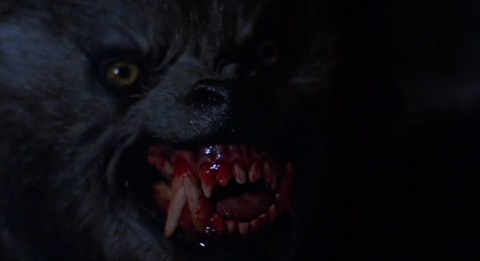




No Comments